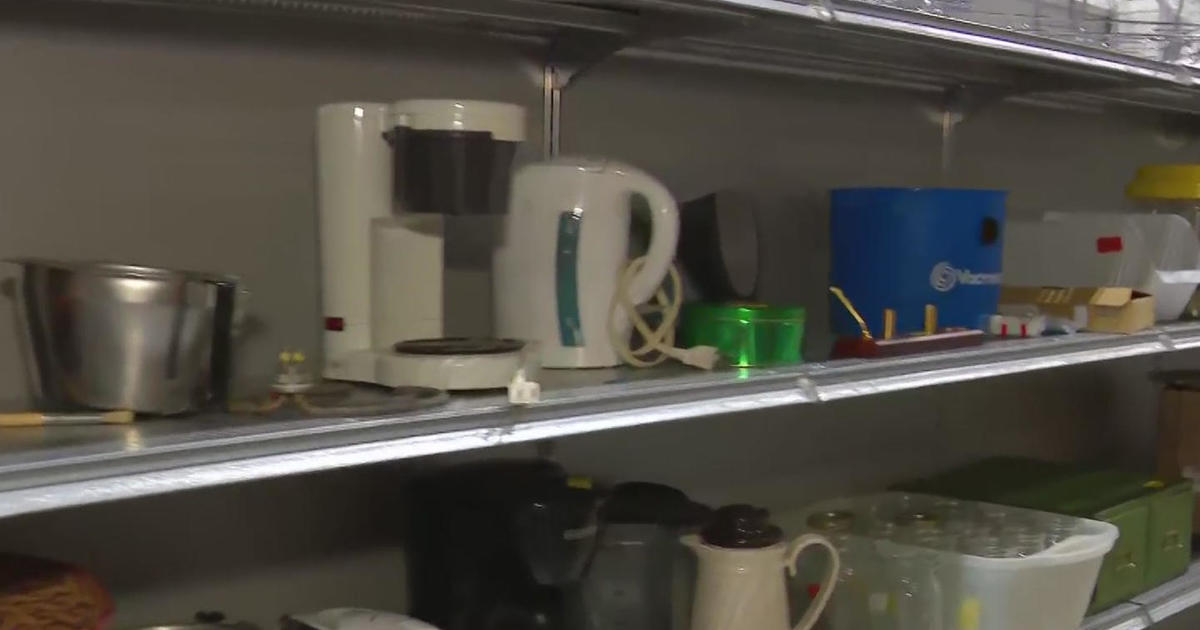How Does Food Waste Get Composted?
MINNEAPOLIS (WCCO) - This Thanksgiving, people across Minnesota will likely be throwing out food, even when they don't want to. But, depending on where you live, none of that food needs to end up in a landfill.
In several cities and counties, there are organics programs that divert the food and paper waste.
Some cities in Hennepin County already have organics curbside pick-up. In 2022, all cities in Hennepin County will be required to have an organics program. Throughout Ramsey and Washington counties, there are organics drop-off sites, and both counties are planning to have their own organics curbside programs by 2023.
In Minneapolis, more than 6,000 tons of organics were diverted to compost last year. Just over half of Minneapolis residents have signed up for organics bins and the city estimates about 30% of the household waste is compostable.
"Every little bit helps," says Kellie Kish, Director of Recycling for the City of Minneapolis. "The story about recycling is, it's one plastic bottle or it's one aluminum can, said 40,000 people. One banana peel, another banana peel, it really does add up."
So, how does Minneapolis go from organics to compost? Good Question.
It starts with the curbside pickup program that's now been in place citywide since 2016. City trucks pick up from the green bins and bring the organics waste to SKB Environmental Transfer Station in Southeast Minneapolis. Each morning, semi trucks pick up the organic material from SKB and bring it to Specialized Environmental Technologies (SET), a recycling facility in Rosemount.
In the organics bin, people can put in any kind of food -- vegetables, meat, dairy, cooked or uncooked. Compostable paper products are also allowed, including tissues or cotton balls or non-plastic coating paper boxes. A logo on the materials signifying BPI Compostable tells a person that item is allowed for organics pickup.
"Truly all food scraps can go in the compost because they go to such a large-scale composting site that they're broken down," says Claire Pardubsky, a Minnesota Green Corps member working with the City of Minneapolis.
At SET, the organic waste is combined with yard waste to create the proper ratio of nitrogen to carbon to better allow the material to be broken down. It's separated into piles and sits for about six weeks, reaching internal temperatures of up to 160 degrees.
"The biology is all the microorganisms that are physically consuming the food waste," says Jake Duane, Director of Organics Development for SET. "The chemistry is as those microorganisms consume that material, they're breaking the chemical bonds and that releases heat to further help break down the material -- almost like it's cooking."
After the first six weeks, the piles are screened and any unwanted material (usually plastics) are taken out. The newly screened piles then sit for nine months.
After the nine months, the piles are screened once again to create the final product of compost.
"A lot of people think compost is just dirt, but it's more of a fertilizer," says Duane. "You add it to your soil to get a healthier soil product."
SET then sells the compost to individuals and private companies that work on landscaping, gardens and transportation projects.
To Duane, it's an incredible process.
"You're taking something that would have been destined to a landfill and you're recycling it into something new that's more value," he says.
At the same time, Kish wants to remind people to first focus on reducing their food waste before recycling.
"Reducing wasted food is the number one thing we can do for the environment," she says.
Here's a list of tips and tricks to reduce wasted food.



